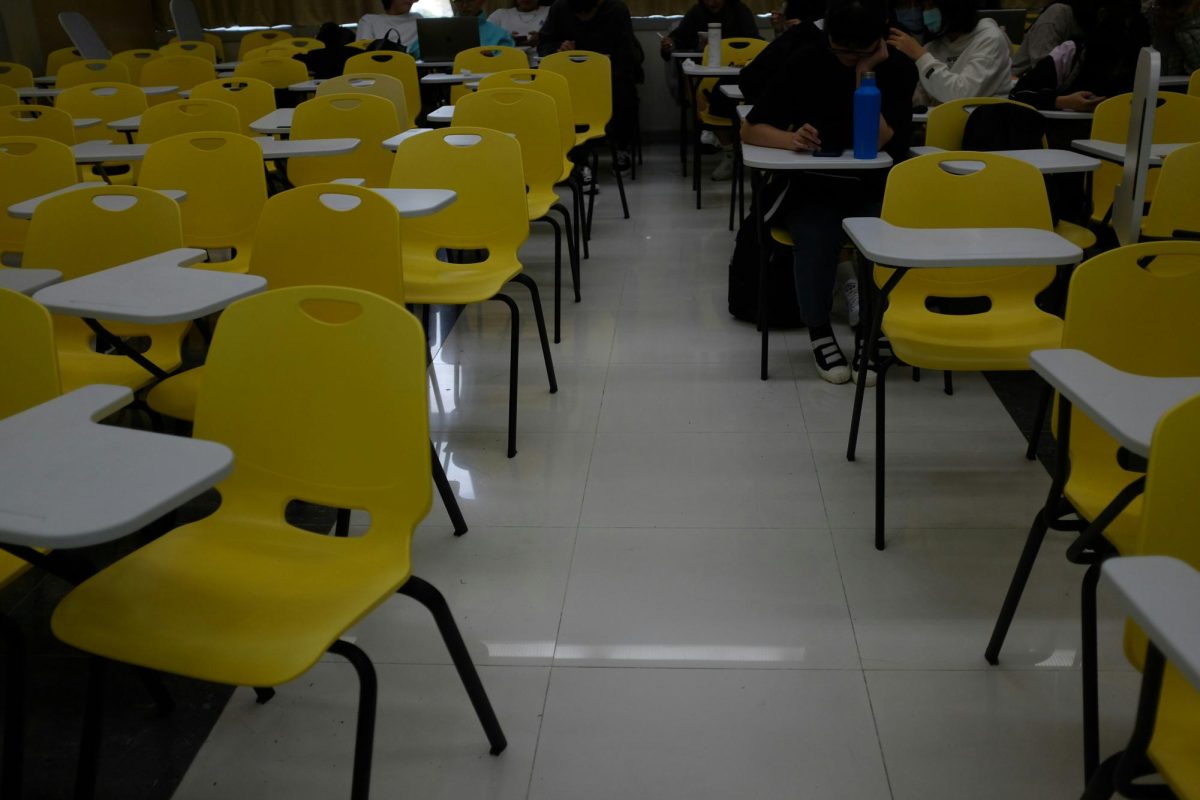This article was originally published in Kaleidoscope‘s Spring 2025 print edition. It is being published as a separate online article now for easy access.
For high school students, May can oftentimes be the most stressful time of the year for one reason: AP exams. Students spend countless hours studying for these grueling tests. This year, the biggest change for most students was the introduction of digital exams, which students had to navigate on top of other challenges, such as having multiple tests on the same day.
Some students who have taken AP exams in the past feel that this year’s exams went better than last year’s. Violet Fortner, a junior, said, “After experiencing AP World [History], I really got a feel for what the exams are like, and it allowed me to create a more…all-around study guide for this year’s exams.” On the other hand, Ava Perrotta noted that this year’s exams felt more challenging, but the pressure was less intense as a senior, saying, “It’s more about gaining credit than it is sending scores to schools to help you actually get into the schools.” Aiming for a five as a sophomore or junior looking to impress colleges is certainly a more demanding task than aiming for a three or four to simply gain credit for college classes.
Taking two exams on the same day is a decidedly difficult challenge. This year, the AP World History and AP Statistics exams were back-to-back, which impacted a number of sophomores. Fortner, who had a similar experience last year, described it as “traumatic.” The stress of cramming the night before a single test is significant, so having it doubled is certainly not a pleasant situation. Fortunately, according to numerous students, the majority had their exams more spread out.
While many students were initially opposed to the digitization of the exams this year, student experiences were generally positive. Fortner stated, “I could type faster, and it was easier to remove sentences and read over my work.” In addition, some exams were hybrid, being partially digital and partially done on paper, such as AP Chemistry. Perrotta said, “With things like English, it was definitely helpful to type out instead of handwriting all the essays…but more STEM-based classes should be entirely on paper if possible.” Will Squire, a sophomore, also noted that typing was faster online, but shared that it was “not ideal” for annotating documents. Nonetheless, the overall sentiment was positive towards the online exams, despite prior reservations.
Some students felt very well prepared for their exams, such as Squire, who emphasized studying throughout the weeks leading up to the exams rather than last-minute cramming. Fortner was grateful for in-class preparation, as thanks to the rigor of her AP US History teacher Ms. Bilek’s work, she said, “when I left that AP exam, I was smiling.” However, Perrotta shared that in senior classes, “there were a lot of kids not taking the exam…so it was more of a self-study situation.” The lack of in-class preparation certainly made the exams more difficult.
Although everyone has their own preferred study methods, there are certainly common favorites. For example, Fortner used Heimler’s review for APUSH, as well as studying with friends, saying, “We had discussions over it, and our opinions on certain people, and…that would help me trigger the information during the test.” Perrotta and Squire utilized review videos and practice tests. Perrotta expressed, “I don’t really learn by just passively listening, so I would say active practice is what I like to do.”
Being a senior, Perrotta has had her fair share of AP exams throughout high school. She advised those taking their first exams next year to “start your preparation earlier…map out the way you’re going to study, break down the units ahead of time, and say that you’re going to do this unit this week, and by the time the test comes, you should feel entirely prepared for it.”









